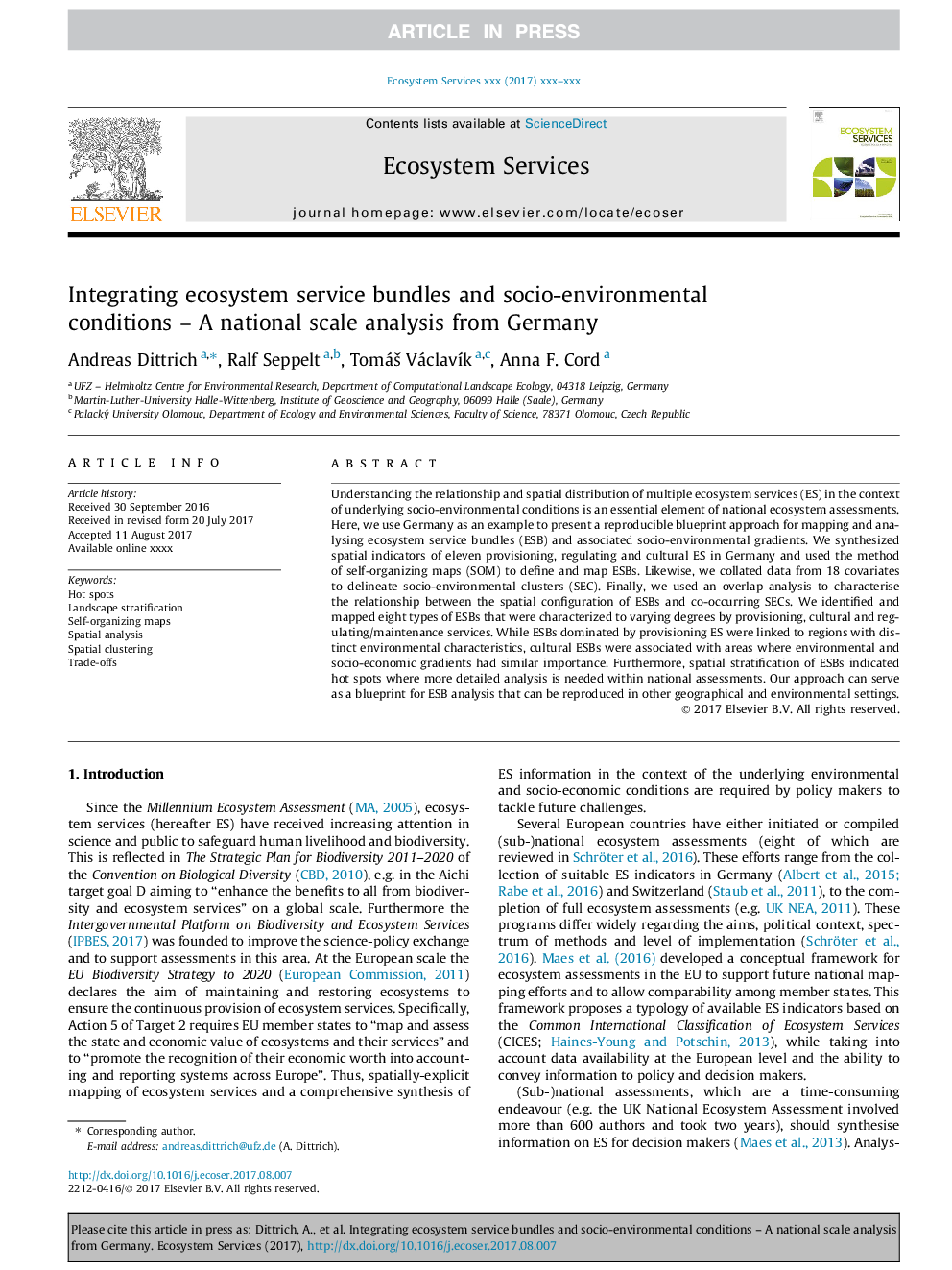| Article ID | Journal | Published Year | Pages | File Type |
|---|---|---|---|---|
| 6556486 | Ecosystem Services | 2017 | 10 Pages |
Abstract
Understanding the relationship and spatial distribution of multiple ecosystem services (ES) in the context of underlying socio-environmental conditions is an essential element of national ecosystem assessments. Here, we use Germany as an example to present a reproducible blueprint approach for mapping and analysing ecosystem service bundles (ESB) and associated socio-environmental gradients. We synthesized spatial indicators of eleven provisioning, regulating and cultural ES in Germany and used the method of self-organizing maps (SOM) to define and map ESBs. Likewise, we collated data from 18 covariates to delineate socio-environmental clusters (SEC). Finally, we used an overlap analysis to characterise the relationship between the spatial configuration of ESBs and co-occurring SECs. We identified and mapped eight types of ESBs that were characterized to varying degrees by provisioning, cultural and regulating/maintenance services. While ESBs dominated by provisioning ES were linked to regions with distinct environmental characteristics, cultural ESBs were associated with areas where environmental and socio-economic gradients had similar importance. Furthermore, spatial stratification of ESBs indicated hot spots where more detailed analysis is needed within national assessments. Our approach can serve as a blueprint for ESB analysis that can be reproduced in other geographical and environmental settings.
Related Topics
Life Sciences
Agricultural and Biological Sciences
Agricultural and Biological Sciences (General)
Authors
Andreas Dittrich, Ralf Seppelt, TomáÅ¡ VáclavÃk, Anna F. Cord,
